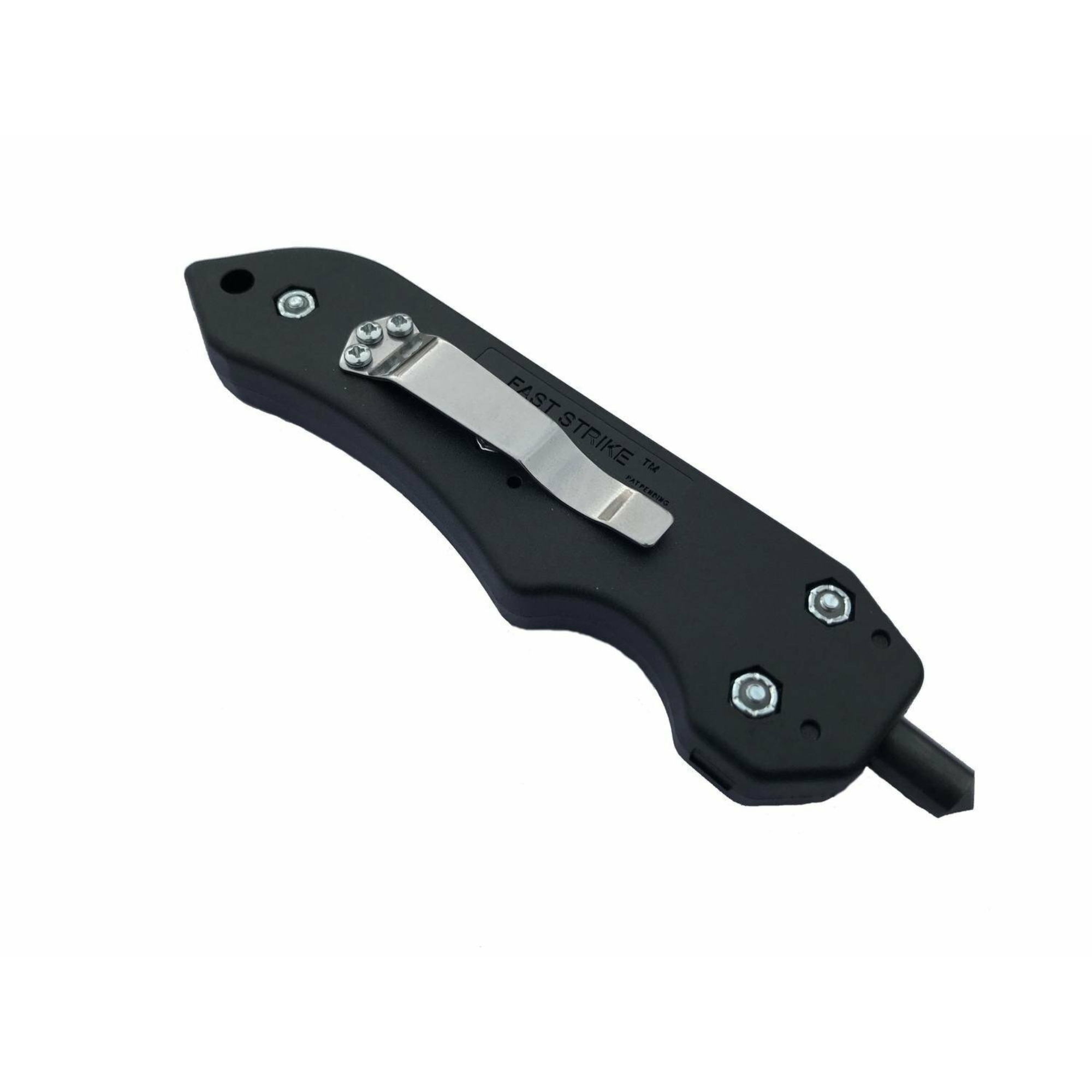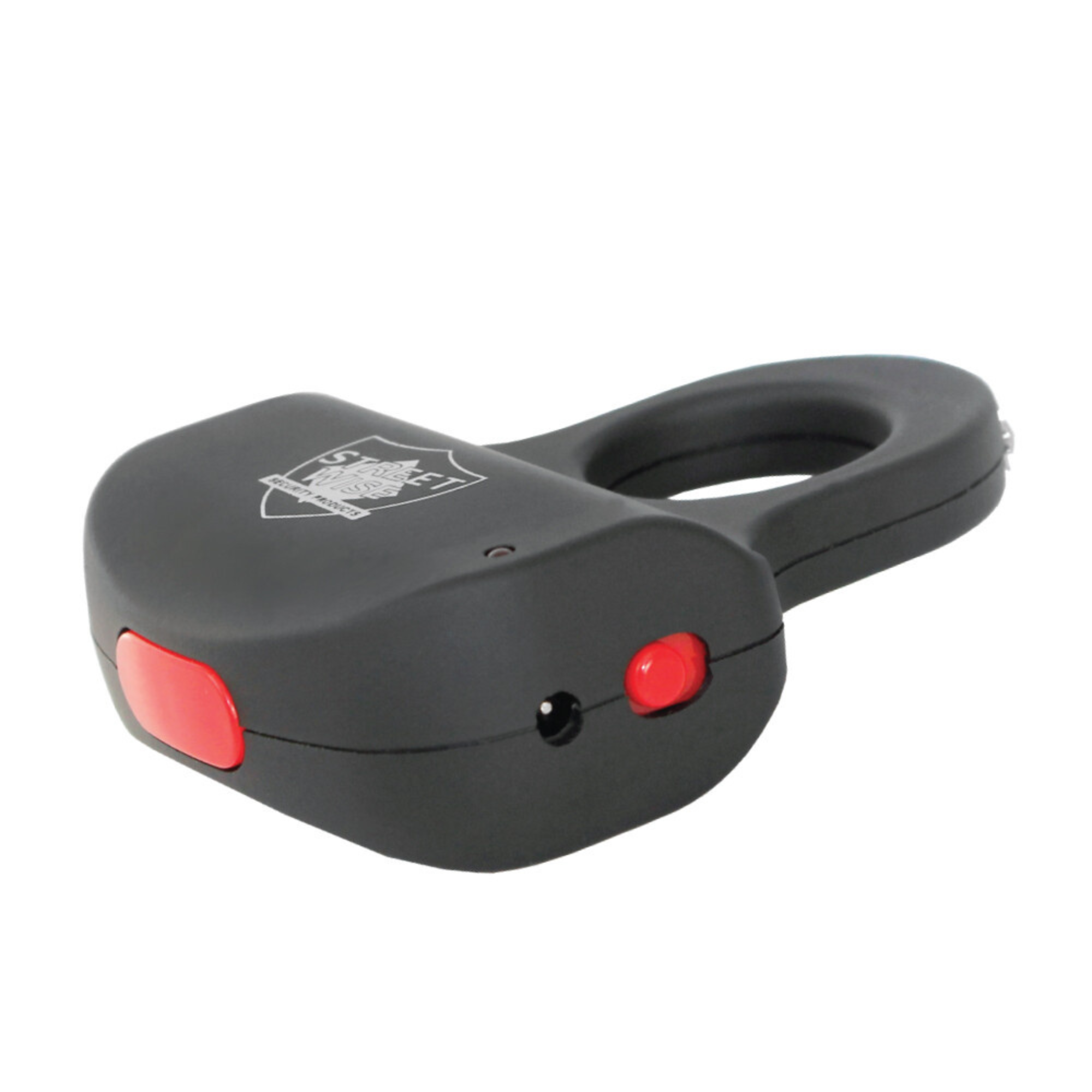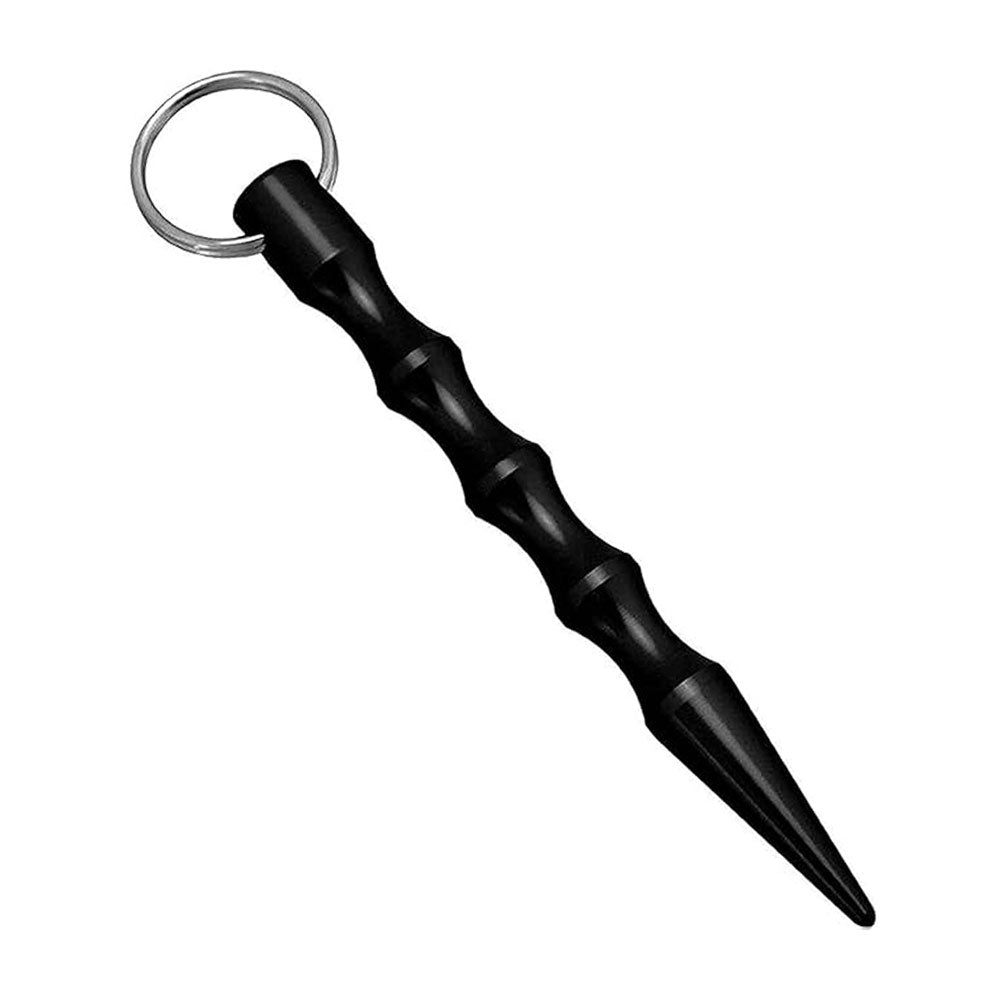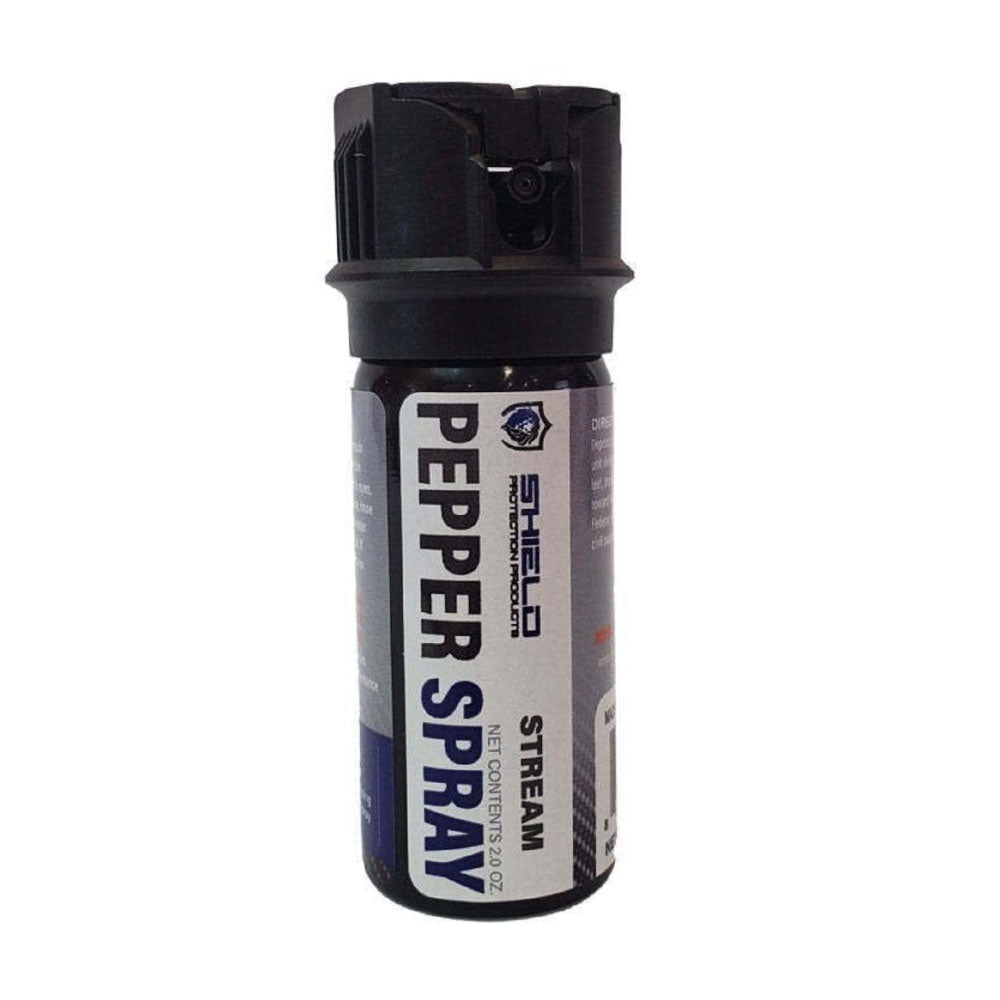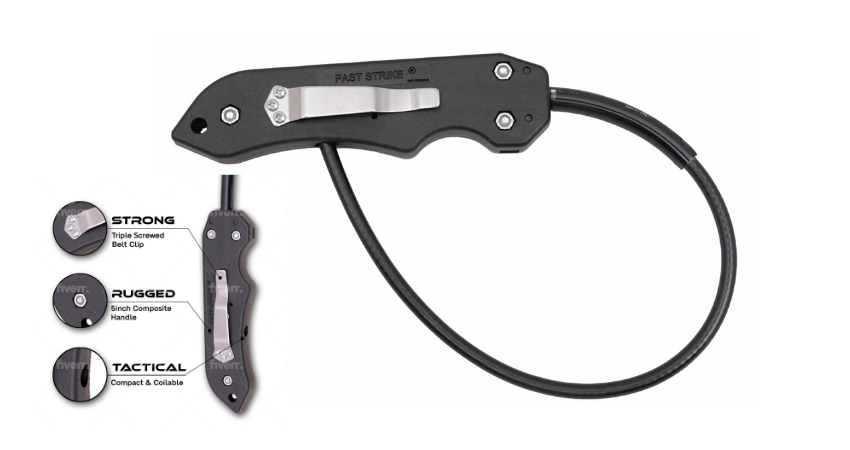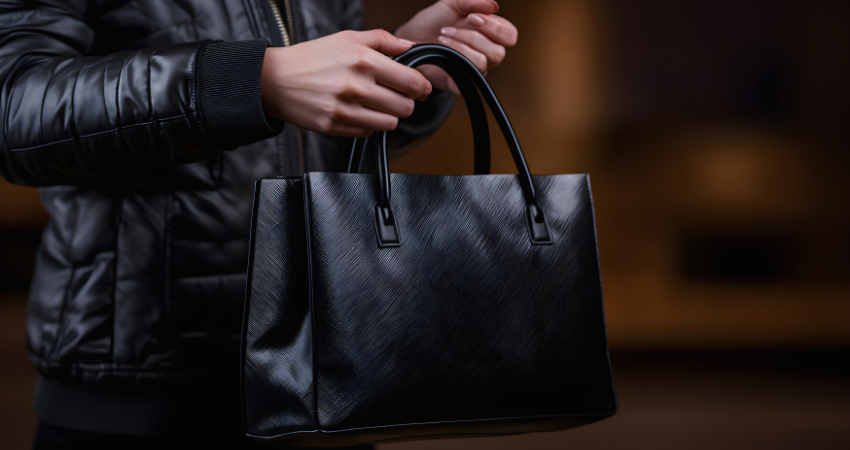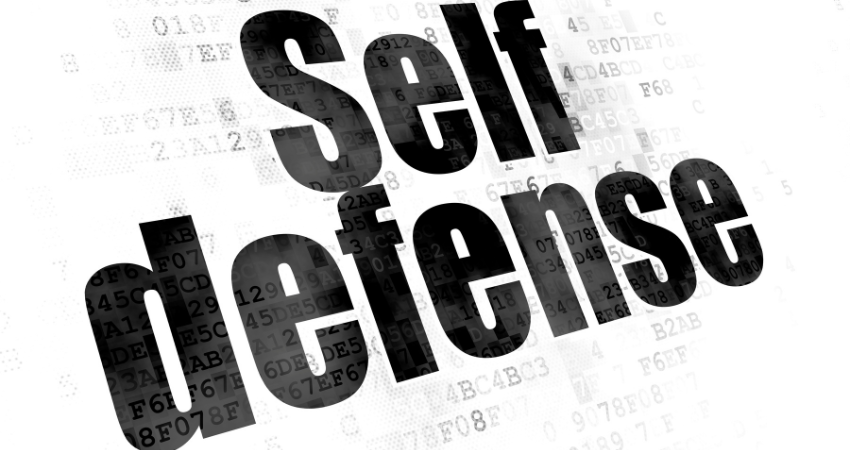
When you're getting ready to fly, you might ask, "Can I bring self-defense weapons on a plane?" Knowing the TSA rules for self-defense tools and what's allowed is important to avoid any issues during your trip. Some items, like pepper spray or mace, have strict rules, while others, like personal alarms and certain keychains, are easier to bring. Always remember that the TSA officers have the final say, and it's smart to check with your airline before packing these items.
Understanding TSA Guidelines for Self-Defense Items

Traveling can sometimes make you feel uneasy. Knowing the TSA's rules about self-defense tools is critical for your safety. The Transportation Security Administration (TSA) has rules to keep everyone safe while flying. Understanding these rules can make your trip smoother and more fun.
Overview of Prohibited and Permitted Items in Carry-On and Checked Luggage
When packing for a flight, it's important to know what you can bring on and what to check. The TSA doesn't allow certain self-defense items like guns, sharp objects, and pepper spray in carry-on bags. But some of these items can go in your checked luggage if you follow the rules. For example, you can take aerosol insecticides and pepper spray in your checked luggage, but there are limits on how much you can bring.
| Item | Carry-On Allowed | Checked Allowed |
|---|---|---|
| Pepper Spray | No | Yes (Limited Quantity) |
| Firearms | No | Yes (With Special Instructions) |
| Sharp Objects (Knives, Swords) | No | Yes |
| Baseball Bats | No | Yes |
| Battery-Powered Wheelchairs | Yes (With Battery Precautions) | Yes |
| Axes and Hatchets | No | Yes |
| BB Guns | No | Yes (With Special Instructions) |
Special Considerations for Self-Defense Sprays
You need to be extra careful when flying with self-defense sprays like pepper spray. The TSA says you can bring a small can of pepper spray in your checked luggage. It must be 4 ounces or less and have a safety lock to prevent it from going off by accident. Make sure to pack it safely and tell the airline about it when you check-in.
The Final Decision: TSA Officer Discretion
Even if you follow all the TSA rules and know what you can bring on a plane, the TSA officers at the security check can still make a decision. They focus on keeping everyone safe, so they might not let you bring something even if it's allowed. It's important to work with the TSA agents and consider how they check for security when packing.
Can I carry a self-defense weapon on a plane?

When planning to bring a self-defense weapon on a plane, it's key to know the TSA rules and airline policies. For those thinking of bringing self-defense tools, remember that carry-on has strict limits while checked baggage has more flexibility.
Your passion for personal protection on airplanes must align with legal and safety rules from aviation bodies. Items like tactical pens or stun guns are for personal safety but must go in checked bags. This rule helps keep you, your fellow passengers, and the flight safe.
| Item | Allowed in Carry-On | Allowed in Checked Baggage |
|---|---|---|
| Pepper Spray | No | Yes, with restrictions* |
| Stun Guns | No | Yes |
| Tactical Knives | No | Yes |
| Firearms | No | Yes, with declaration |
*Pepper spray can be in checked bags in limited amounts and under certain conditions.
- If you're into personal protection on airplanes, tell the airline about your items at the ticket counter.
- Make sure firearms and ammo are locked in a hard-sided container.
- Know the TSA rules and your airline's policies before traveling with self-defense tools.
With recent events and increased security, carrying self-defense tools while traveling is a big topic. Before packing, check all items against the latest TSA updates and airline rules to avoid problems. This way, your trip will be legal and worry-free.
Checked Baggage: What Self-Defense Tools Are Allowed?
When flying, knowing what self-defense tools you can bring in your checked baggage is key. The rules for these items can change, so it's important to keep up with TSA and FAA rules. This way, you stay safe and legal. Let's look at what tools you can bring and how to follow the rules.
Pepper Spray and Mace Regulations
In your checked luggage, the TSA lets you bring one container of pepper spray or mace. However it must be 4 fl. oz. (118 ml) or less and have a safety feature to prevent accidental use. Remember, any spray with more than 2% tear gas is prohibited. Always check with your airline and the destination country before packing these items.
FAA Regulations on Hazardous Materials
The FAA considers many self-defense tools as hazardous materials which means they have special rules for air travel. Items like stun guns and some self-defense sprays must be packed right, following FAA rules on how much and how they're packaged. Knowing these rules helps you follow the law and have your tools ready when you arrive.
- Personal Alarm Keychain: Ideal for sounding an immediate alert; should be placed in checked luggage.
- Tactical Pen: Make sure it’s packed in your checked baggage to avoid issues during security checks.
- Stun Guns: Check the specific state and airline regulations but generally require placement in checked bags.
- Tactical Gloves: These can be carried in your carry-on or checked baggage without special restrictions from the TSA.
- Metal Water Bottle: While intended for hydration, its sturdy construction allows it to double as a self-defense tool under pressing circumstances.
Personal safety is a big concern for travelers. Knowing which defense tools are okay in checked baggage can help ease your mind. Always check the latest TSA and FAA rules, as they can change. Also, think about taking self-defense classes. This can make you feel more confident and ready to protect yourself.
Air Travel with Self-Defense Items: Legal Considerations
When planning your trip, it's key to know about TSA regulations, self-defense tools, and legal self-defense items on flights. Following TSA and airline rules is a must to legally carry your self-defense items. Here's a guide on what you can bring and the legal things to remember.
| Item | TSA Guidelines | Airline Policies | State/Country Legal Status |
|---|---|---|---|
| Pepper Spray | Allowed in checked baggage (up to 4 oz, with safety mechanism) | Varies (e.g., Delta, United, American prohibit; Hawaiian allows) | State specific (e.g., illegal in Canada, size restrictions in FL, MI) |
| Stun Guns/Tasers | Permitted in checked baggage | Typically allowed (check individual airline policies) | Varies by state (voltage limits and restrictions applicable) |
| Unloaded Firearms | Allowed in checked, secured in hard-sided, locked case | Declaration required at ticket counter | Must comply with local laws of origin and destination |
| Kubotans | Allowed in carry-on, subject to additional screening | Generally permitted (subject to enhanced screening) | Legal in most jurisdictions |
When packing your self-defense items, check the TSA regulations on self-defense tools and airline rules. Also, know the laws about these items in your starting and ending places. Laws can change a lot, so what's okay on one flight might not be on another. Make sure your self-defense tools, like pepper spray and stun guns, meet all the rules to avoid problems on your trip.
If you're worried about safety while traveling, consider joining newsletters or getting advice on legal self-defense items on flights. Being informed helps you deal with air travel rules with confidence and safety.
Protecting Yourself While Flying: Legal Self-Defense Items on Flights

Ensuring your safety during air travel means knowing what self-defense items are okay. It's important to understand TSA and airline rules on security gear.
Non-lethal Defense Options and Their Restrictions
Pepper spray is a common choice for self-defense. But, there are strict TSA rules to follow. You can bring pepper spray in checked bags under certain conditions, but not in carry-ons. Make sure the spray is 2% by mass and the container is 118 ml (4 fl. oz.) or less.
All major airlines like JetBlue, Southwest, and United don't allow pepper spray, except Hawaiian Airlines. They follow TSA rules.
Also, check state laws on pepper spray. For example in Florida, it's 2 ounces, and in Michigan, 1.2 ounces with an 18% OC strength limit. Knowing these rules is important for flights to or from different states.
Airline Policies on Personal Protection
Airlines have their own rules for carrying self-defense gear. Hawaiian Airlines lets you bring pepper spray in checked bags, but others don't. Always check with your airline before flying.
Other legal tools include tactical pens and self-defense keychains. Tactical pens are useful for writing and self-defense while self-defense keychains are small, legal, and handy for protection.
Personal safety alarms are also a good option. They make a loud sound to scare off an attacker and get attention. They're legal and effective for protecting yourself on flights.
For more defense skills, consider taking self-defense classes. They teach you how to act in different situations, including on a plane.
In summary, always know the rules on self-defense items for flights. This includes TSA, state, and airline policies to stay safe and follow the law.
Self-Defense Weapon on Airplane: Alternatives to Traditional Weapons
There are smart alternatives if you're worried about staying safe on airplanes but don't like the rules on bringing self-defense weapons. These options follow TSA rules and can make you feel safer without breaking any laws.
Unconventional Tools for Personal Safety
Not all self-defense tools are allowed on planes. But, everyday items can be great for defending yourself. A metal water bottle can be a strong, yet not obvious, tool for self-defense. Tactical pens, which you can pack in your checked luggage, are another good choice. They have a tough tip for breaking glass if needed.
S.O.S. jewelry is another smart pick. It turns safety alerts into stylish accessories. Personal alarm keychains can also be useful, making a loud noise to get attention and scare off an attacker.
How Everyday Items Can Be Used for Defense
Items you already carry can be used for self-defense on planes. A strong pen or an electronic charger cable can be used to protect yourself if needed. They're common items that won't cause trouble at security checks.
It's important to know the latest rules from airlines and the TSA before you travel. Check what's allowed in carry-on and checked luggage to avoid problems.
You don't have to stick to traditional self-defense weapons that could cause legal issues or get taken at security. By using everyday items and other alternatives, you can stay ready and feel safe on your trips.
Packing for Safety: The Most Effective TSA-Approved Defense Items
When you're getting ready for your trip, it's key to know what self-defense items to bring, especially if you're flying solo. Choosing TSA-approved self-defense items keeps you safe and legal. Women traveling alone should look for small, discreet tools that follow airport security self-defense rules.
Portable Devices and Gadgets for Self-Defense
Top picks include personal alarms and S.O.S. jewelry, which are great for non-violent defense. They're easy to carry and can get your attention in an emergency. Tactical pens and defensive rings are also good choices. They're useful and protect you without making a big scene.
| Item | Description | TSA-Approved? | Notes |
|---|---|---|---|
| Defender Ring | A ring with a concealed blade | Yes | Popular among solo female travelers |
| Tactical Pen by The Atomic Bear | Pen that doubles as a self-defense tool | Yes | Sturdy and portable, ideal for quick notes and protection |
| Personal Alarm Keychain | Device that emits a loud sound when activated | Yes | Allowed in both carry-on and checked bags |
| Pepper Spray | Non-lethal chemical spray for defense | Limited | Permitted in checked bags with restrictions; check legality at destination |
When picking your TSA-approved self-defense items, think about the laws where you're going. The Defender Ring and the Tactical Pen by The Atomic Bear are great for their effectiveness and ease of carrying. Always be prepared and aware of your surroundings for the best defense.
Airport Security Screening: What to Expect When Carrying Self-Defense Gear
When you're getting ready for a flight, knowing what happens at airport security is key, especially with TSA regulations self-defense tools. Items like airport security self-defense gear get extra checks to keep everyone safe.
Additional Screening and Prohibited Items
Items for self-defense that follow TSA regulations self-defense tools might get more attention. For example, some self-defense items are okay in checked bags but not in carry-ons. Here are some details to keep in mind:
| Item | Allowed in Carry-On | Allowed in Checked Bags |
|---|---|---|
| General Self-Defense Tools (Tactical pens, non-lethal sprays) | 75% | 100% |
| Battery-powered wheelchairs and mobility devices | 100% with inspection | 100% |
| Billy clubs | Not allowed | 100% |
| Biological specimens in preservative solutions | Not allowed | Limited (Up to 1 liter) |
| Non-spillable batteries in mobility devices | Varying | Additional measures required |
What to Do if Your Item is Confiscated
If your airport security self-defense gear is taken away, stay calm. Ask how to get it back later or have it sent to you. Knowing what the airport does with confiscated items can help you stay calm during a stressful time.
Staying up-to-date with the latest TSA regulations self-defense tools can make flying easier. It helps you follow the rules and keep your safety gear close.
Traveling with Self-Defense Weapons: International vs. Domestic Flights
When you travel internationally, knowing the rules about international air travel self-defense items is key. These rules differ from those for domestic flights carrying weapons. For example, the U.S. allows certain sprays in checked bags, but Canada doesn't allow pepper spray at all.
- In the U.S., the TSA has rules for carrying defensive sprays in checked bags. They must be designed to prevent accidental use.
- But international rules can be tougher. The EU, some Asian countries, and the UK don't let you bring sharp objects in carry-ons.
- When packing a knife, make sure it's properly sheathed or in a protective case in checked luggage. This way, you avoid having it taken away.
Remember, understanding TSA rules is just the start. Airlines also have their own rules, which might limit what you can bring on board, whether it's for domestic or international flights. For instance, Hawaiian Airlines is the only airline that lets you pack pepper spray in checked bags under certain safety conditions.
| Airline | Pepper Spray Allowed | Knives in Checked Baggage |
|---|---|---|
| Hawaiian Airlines | Yes | Yes, if sheathed |
| JetBlue Airlines | No | Yes, if sheathed |
| Southwest Airlines | No | Yes, if sheathed |
| United Airlines | No | Yes, if sheathed |
To avoid fines up to $2,250, always check TSA and airline rules before you travel. Some self-defense items, like pepper spray, might set off metal detectors, so be ready for extra checks.
Think about using less regulated self-defense options, like invisaWear jewelry. It's legal and can discreetly signal for help in an emergency. No matter what you choose, being informed and following the rules is crucial for a smooth trip with self-defense items on both domestic flights carrying weapons and international air travel self-defense items.
Rules for Carrying Weapons on Planes: A Close Look at Non-lethal Options
When you fly, you must follow certain rules about bringing self-defense items. Knowing what you can put in your carry-on and checked bags is key. Let's look at what non-lethal weapons and other items you can bring.
| Item | Carry-On Bags | Checked Bags | Special Instructions |
|---|---|---|---|
| Aerosol Insecticide | No | Yes | - |
| Air Mattress with Built-in Pump | Yes | Yes | Requires approval |
| Airbrush Make-up Machine | Yes | Yes | Requires approval |
| Alcoholic Beverages (<70% alcohol) | Yes | Yes | Limited to 5 liters in checked baggage; mini bottles must fit in a quart-sized bag |
| Alcoholic Beverages (over 140 proof) | No | No | - |
| Ammunition | No | Yes | Requires secure packaging |
| Arc Lighters and E-Lighters | Yes | No | Requires approval; not allowed in checked bags |
Some items like aerosol insecticides and ammunition can't go in carry-on bags for safety. But, they can go in checked bags with certain rules. Items like air mattresses and airbrush makeup machines need special permission to be on the plane. Knowing these rules helps you pack right and avoid problems at security.
For self-defense, items like tactical pens are not allowed in carry-on bags. They could be seen as weapons. Putting them in checked bags saves you time and hassle at security.
The Transportation Security Administration (TSA) has clear rules on what you can bring. Always check their website or ask your airline for the latest info. This way, you can travel smoothly and without stress.
Flying with Self-Defense Weapons: Tips for a Smooth Journey
When you travel with self-defense weapons on planes, you must know the strict rules to stay safe and follow the law. The TSA and FAA have clear guidelines, especially for firearms and tactical tools. Here's a guide to help you follow these rules easily.
All firearms must be unloaded and go in checked baggage only. They should be locked in a hard-sided container for safe transport. Not following this can lead to big problems or even stopping your trip. Ammunition also has rules; it can't be in carry-on and must be boxed if in checked bags.
It's important to know what makes a firearm loaded. According to the rules, a gun is loaded if there's a live round in the chamber or ammo is easy to get to. This rule helps you pack your bags right to avoid issues at security.
- Always tell the airline about your firearm and ammo at check-in.
- Make sure your gun case is strong and locks well to stop unauthorized access.
- Put scopes or smaller parts in checked bags, as they're okay.
- Ask your airline about any extra fees or rules for carrying firearms.
While traditional weapons like guns need careful handling and follow strict rules, other items like tactical flashlights are okay on flights. These items aren't seen as deadly but can help in emergencies. But, remember, what's practical to carry can change, as David Workman shared his story of a tactical pen being taken at security.
Keeping safe on a plane means working with the flight crew, who know how to handle emergencies. Learning how to calm down tense situations with words or actions is also key. This can stop fights before they start.
Running into big problems on a flight is rare, thanks to good security and smart passenger actions.
In the end, knowing and following the rules for bringing self-defense weapons on planes keeps you legal and everyone on the plane safe.
Self-Defense Weapons on Planes Conclusion
Traveling with self-defense weapons and tools requires knowing the rules set by TSA, FAA, and airlines. It's key to carry pepper spray or firearms correctly. For example, pepper spray can go in checked luggage but must be in a 4-ounce container with a safety lock. Firearms must be declared, unloaded, and kept in a locked, hard-sided case.
But remember, airlines like JetBlue, Southwest, and United might have their own rules. And, if you're flying to another country, like Canada, there are different laws. So, always check the specific rules for your trip.
Your safety and following the law are most important. By researching the laws of each state and country you visit, preparing for airline rules, and following all declaration procedures carefully, you can stay safe and legal. The rules for air travel with self-defense tools change often. So, always keep up with the latest to protect your safety and legal rights while flying.
Self-Defense Weapons on Planes FAQs
Can I carry a self-defense weapon on a plane?
- The Transportation Security Administration (TSA) has strict rules about self-defense weapons on planes. You can't bring them in your carry-on. But, some items like pepper spray under 4 fl. oz. (118 ml) with a safety lock might be okay in checked bags.
What are the TSA regulations for self-defense tools?
- The TSA doesn't allow weapons like guns, knives, or stun guns in carry-on bags. Items like tactical pens or personal alarms for self-defense must go in checked luggage. TSA officers at the checkpoint make the final call, so always check the latest rules before you fly.
Are there any self-defense items allowed in carry-on luggage?
- Most self-defense items can't be in carry-on bags. But, things like personal alarms or S.O.S jewelry are okay if they meet TSA rules. Always check the current TSA guidelines before you pack.
What self-defense tools can I put in my checked baggage?
- In checked bags, you can pack one container of mace or pepper spray, under 4 fl. oz. (118 ml), with a safety lock. Other self-defense items must follow TSA and FAA rules on dangerous materials.
How do FAA regulations impact traveling with self-defense items in checked baggage?
- The FAA sets limits on dangerous materials, like self-defense sprays, in checked bags. Check the latest FAA rules and talk to your airline to make sure you're following them when packing self-defense items.
What should I know about airline policies and legal considerations for self-defense items?
- Airlines may have stricter rules on self-defense items than the TSA. You also need to think about the laws on using self-defense items where you're going, as they vary by state and country.
Are there any TSA-approved self-defense items?
- Yes, some self-defense items like personal alarms and certain S.O.S jewelry are TSA-approved. Choose items that follow TSA rules, are easy to carry, and can alert others in an emergency.
What should I know about airport security screening for self-defense gear?
- Expect extra checks at airport security for self-defense gear. Make sure you follow the rules for packing allowed items. If something doesn't pass security or sets off an alarm, it might be taken away.
What are the different rules for carrying self-defense weapons on international versus domestic flights?
- International flights have their own rules, including those of the destination country. Domestic flights in the U.S. have similar rules, but you must still follow TSA and airline guidelines for self-defense items.


